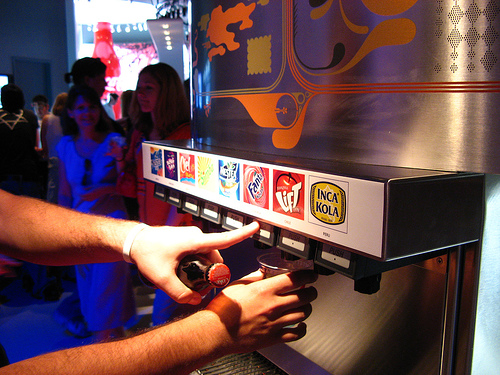 Because most purveyors of weight-loss plans are idiots, the words “diet” and “deprivation” have become nearly synonymous. When you start thinking about reducing your gut, you imagine a dreary patch of flavor denial and an aching belly, and quite naturally you turn away. That’s what’s wrong with the average diet: It contains the seeds of its own destruction.
Because most purveyors of weight-loss plans are idiots, the words “diet” and “deprivation” have become nearly synonymous. When you start thinking about reducing your gut, you imagine a dreary patch of flavor denial and an aching belly, and quite naturally you turn away. That’s what’s wrong with the average diet: It contains the seeds of its own destruction.
We’re not going there. Instead, we offer this promise: We’ll help you chase your extra 10 or 15 pounds out of town by tempting you with eating opportunities all day long—by keeping your belly so full it’ll never occur to you that you’re on a diet. And all we ask is that you agree to explore a broader swath of life’s big buffet.
The fact is, you can feel better than you do today; you can have more energy; you can improve your long-term health prospects; you can even get lucky more often, with better results. And food—the right kind of food—is your ticket; all the secrets are right here. In 5 weeks, you’ll be in your new home: the land of the 32-inch waist. Ready? Let’s go.
I mean, let’s eat.
Eat 5 Meals a Day
That’s three squares and two snacks. In a study in the American Journal of Epidemiology, researchers found that men who ate four or more times a day had half the risk of becoming overweight compared with those who ate three times or fewer. This doesn’t mean three feasts and two 900-calorie “snacks”; read on for the foods to pile on your plate.
Fill Up on Fiber
“Fiber is the best food you can eat when you’re trying to lose weight,” says Gay Riley, R.D., a nutritionist in Dallas and the author of Pocket Personal Trainer. Here’s why: It slows your rate of digestion, which keeps you feeling full longer and reduces sugar cravings. And because it binds to other foods, fiber helps hustle calories out of the body.
A USDA study determined that people who consume 24 grams (g) of fiber daily earn a 90-calorie free pass. Your goal is 5 g fiber at each meal.
5 or more g fiber:
– 1 cup of any cereal with “bran” in the name—such as raisin bran or All-Bran. If the magic word is missing, check the Nutrition Facts label.
– 1 cup of cooked beans—pinto, kidney, navy, any kind
2 to 4 g fiber:
– 1 medium apple, pear, orange, or banana
– 1 cup of any fruit that ends in “berry”
– 1/2 cup of cooked asparagus, broccoli, brussels sprouts, carrots, cauliflower, green beans, sauerkraut, or spinach
– 1 ounce (about a handful) of almonds, peanuts, cashews, pecans, or sunflower seeds
– 1 cup of cooked brown rice or whole-wheat pasta, or two slices of whole-wheat bread
Put a Limit on Starch
Since 1980, the average guy’s food intake has grown by 500 calories a day, nearly 80 percent of which can be attributed to carbohydrates; in that time, the prevalence of obesity has increased by 80 percent.
The lesson: Cap your intake of the most carbohydrate-dense foods—such as grains and potatoes—at three servings a day. (One serving is the equivalent of one slice of bread, 1/2 cup of cooked pasta or rice, or one small potato.) Always eat the highest-fiber, least-processed versions of these foods—whole-wheat breads, pastas, and cereals; brown rice instead of white; and whole potatoes, including the skin.
Don’t Count Calories
Never restrict your produce intake. You can’t eat too many fruits and vegetables. Potatoes excepted, they contain very few calories, little starch, and lots of fiber.
Have some protein with every meal. Make an effort to eat a serving or two of high-quality protein—yogurt, cheese, milk, beef, turkey, chicken, fish, pork, eggs, or nuts. You’ll get the daily ideal 8 g leucine, an amino acid that’s critical for boosting metabolism and preserving muscle as you drop pounds.
Don’t be afraid of fat. Researchers at the City of Hope Medical Center, in Duarte, California, report that men who ate a low-calorie, high-fat diet lost 63 percent more weight in 6 months than those who followed a low-fat plan with the same number of calories. By replacing some of the starches with fat—which takes longer to digest—you’ll stay full longer and eat less. Emphasize healthy, unsaturated fats: In the study, the high-fat dieters ate 3 ounces of almonds a day.
Rise and Dine
Never mind what you’ve seen at Denny’s—fat guys skip breakfast. University of Massachusetts researchers found that men who skip breakfast are 4 1/2 times more likely to be obese than those who don’t. “Eating breakfast is like putting kindling on the fire of your metabolism,” says Riley, so your body will be less likely to store fat.
Make sure you eat within 90 minutes of waking—men in the study who waited longer increased their chances of obesity by nearly 50 percent.
![Reblog this post [with Zemanta]](https://i0.wp.com/img.zemanta.com/reblog_e.png)










